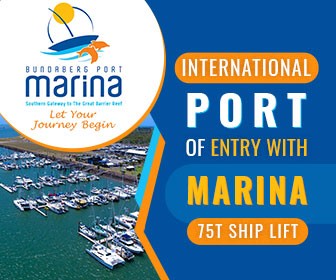Sharks make their presence felt in south east Queensland
Published 13 years ago, updated 6 years ago
As reported by marinebusiness-world.com
Sharks are out in force in Queensland, feeding on bait balls close to popular beaches and sending local enforcement into action to avoid mishaps or worse.
Yesterday, the Queensland Boating and Fisheries Patrol caught a 3.8m tiger shark on a drumline off the Gold Coast. The massive shark was found off The Spit and is the largest tiger shark caught on the Gold Coast this year, weighing in at 450kg.
The shark was brought in to the Queensland Boating and Fisheries Patrol office at Main Beach for scientific investigation as part of a Queensland Government research project with the University of Queensland.
The study seeks to improve our understanding of tiger sharks and includes monitoring their movements in Queensland waters, reproductive characteristics and seasonal trends.
The Queensland Government’s Shark Control Program (SCP) uses nets or drumlines, or a combination of both, to minimize the threat of shark attack on humans in particular locations.
Latest statistics showed 31 sharks had been caught in the shark control equipment on the Gold Coast so far this year, and of this number 6 were 2m or larger.
According to Shark Control Program Manager, Jeff Krause “this trend demonstrates there is a healthy population of sharks in the region, some of which are amongst the world’s most dangerous”.
“All sharks can cause serious injury or even death to people, but those more than 2 meters long are particularly dangerous and more likely to cause fatal injuries.”
Jeff said on average 600 sharks are caught on 85 beaches on the Queensland coastline.
Two days ago, around Main Beach, on the Gold Coast, a pack of 20 sharks was spotted by the crew of the Westpac Rescue Helicopter. Pilot Richard Ainsworth said he was confident he could see bull sharks and some minor reef sharks in the melee, “and there were a fair few of them!”
“We saw some shadows in places that we don’t normally see them and investigated further and that’s what we found,” he said, adding that it was the first time he saw a pack that large.
He said normally if the sharks are not close to the shore, they will leave them alone, but because they were about 50m from the shoreline, and only 5m away from board riders, they chose to intervene.
“There are a few options,” he explained. “Firstly, we can conduct a ‘marine life intervention’, which is basically mustering sharks. If we’re certain there is a threat, from there our aim is to get the swimmers out of the water. We sound the alarms on the helicopter to alert swimmers. We then contact the Surf Life Savers on the beach to instruct people to exit the water.”
A Surf Life Saving RIB was also used to muster the sharks out into deeper water. The entire process – from spotting to cleaning the beach and chasing away the shark pack – took just 15 minutes.
Community opinion is divided on the use of drum lines and nets to protect swimming beaches, with conservationists and marine scientists labeling them dangerous to marine life.
Trevor Long, the marine expert at Sea World, has repeatedly called for the removal of shark nets during whale migrations (June to November). Long is generally on hand to rescue entangled whales and their calves migrating north or south during this period.
“The shark nets offer little protection to swimmers and kill other marine life,” he said. “People don’t understand the number of animals that are taken – turtles, dugongs, dolphins, turtles, rays – every year. There’s an enormous loss of wildlife for this perception of protection.”
Since 2000, there have been 29 whales caught in shark control equipment in Queensland.
Related to following destinations: Australia
Related to the following Cruising Resources: Environment








